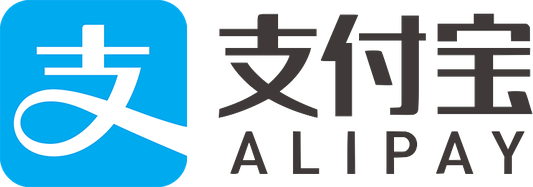
We help businesses accept payments online.
Accounting for over 40% of global online sales and valued at approximately $3.3 trillion, China is home to one of the world’s largest eCommerce markets.
With more than 80% of purchases made on mobile, a tech-savvy population, a strong demand for international brands, and shopping platforms like Tmall Global and WeChat, China has clear channels for foreign brands to enter the market and grow.
However, it can be overwhelming to enter the market based on the sheer size and the fast pace of changing trends. Many eCommerce merchants struggle with localizing, especially when it comes to understanding consumer behaviour, preferred payment methods and navigating the variety of online shopping platforms. Simply offering Chinese language options and local shipping isn’t enough.
Our guide addresses China’s unique digital eCommerce market by helping you understand Chinese consumer behaviour, the role of platforms as “super-app” ecosystems, how to meet the demand for local payment preferences, and simplify compliance and cross-border transactions, by partnering with KOMOJU.
Why China?
China is home to one of the world’s largest and fastest-changing eCommerce markets. It had a total of $7 trillion USD worth of transactions in 2023. This was a 6.31% increase from $6.5 trillion USD in the previous year. In the online retail segment, sales grew by 11%, reaching approximately $2.2 trillion USD. (Source)
But it’s not just about size—China also leads in innovation, especially in mobile-first commerce, where 90% of shopping is done on smartphones. This shift was accelerated by the pandemic and permanently changed shopping habits. This established China as a pioneer in social commerce, super apps, and omnichannel shopping experiences.
To capitalize on this potential, brands must understand the platforms, consumers, and digital infrastructure, how they function, and what strategies to adapt.
China’s Digital Landscape: A Hyper-Connected Market
Hyper-Connected
With over 1 billion internet users, China has the largest internet penetration rate in the world, with an estimated four out of five people in the country now online, with teenagers and elderly people among new users. This growth has been supported by heavy investment in infrastructure, with millions of internet-based stations reaching even remote areas.
Mobile-First & Local Apps
Due to government restrictions and language barriers, China’s digital ecosystem is very mobile-centric, with 99.7% of purchases placing a strong emphasis on local apps. This has created a unique environment where local platforms like WeChat and Weibo are more popular and have more functions than global counterparts.
Digital Integration
In China, platforms are full-service ecosystems that handle different aspects of eCommerce. This includes payments, logistics, communication, and other services. For example, WeChat is a messaging app that functions as a shopping, banking, and service platform.
Local Shopping Holidays
Similar to Black Friday in North America, or Boxing Day in Canada and the United Kingdom, in China, Singles Day (November 11th) and 618 (June 18th) are days when brands have huge promotions and discounts to motivate people to shop.
In addition to understanding China’s digital infrastructure and apps, it is also important to understand the people using them.
Chinese Consumers: What You Need to Know
High Digital Savviness
Chinese consumers, led by the Gen Z demographic, Chinese consumers are young, urban and well-versed in technology. As a result, they have come to expect and embrace immersive, personalized and interactive shopping experiences. This includes:
- live streaming eCommerce
- augmented and virtual reality experiences
- integrating social commerce
- personalization through AI
- gamification and interactive entertainment
Strong Demand for International Brands
Chinese consumers value global and premium brands, especially cosmetics, infant care, and personal care products. They perceive international brands as superior in quality, innovation and safety compared to local products.
Highly Price Sensitive
Chinese consumers are highly price-sensitive. They like premium brands, but still care a lot about price, looking for products that offer good quality for a reasonable price. This is especially true for lifestyle items, where they often compare prices and switch brands if they find better value elsewhere. Even in luxury, younger buyers are getting smarter, knowing that more expensive doesn’t always mean better.
Reliance on Product Reviews & Peer Recommendations
Before they buy, Chinese consumers like to have social proof. They rely on product reviews and peer recommendations, found on platforms like WeChat, Douyin, and Xiaohongshu, and made by friends and influencers.
Key Online Platforms for Chinese Shoppers

China has one of the world’s largest eCommerce markets. It is an ecosystem where different platforms play a distinct role in the customer journey, and consumers expect highly digitalized, mobile-first experiences that are seamless and engaging.
WeChat or Weixin is a Chinese instant messaging, social media, and mobile payment app developed by Tencent. It’s considered a super-app with over 1.3 billion monthly active users. It is used for multiple functions, including chatting, shopping, making payments, getting customer service, and booking flights or doctor appointments.
How to Leverage WeChat
Setting up official accounts and WeChat Pay allows businesses to provide seamless shopping experiences. Brands can also create mini-programs with convenient, in-app services. To increase brand awareness, you can run WeChat Moments ads and influencer campaigns featuring Key Opinion Leaders (KOLs).
Tmall (by Alibaba)
Tmall is China’s leading B2C platform. It hosts official brand stores and is a trusted platform for providing genuine products from local and international brands.
How to Leverage Tmall
Through Tmall Global, foreign brands can connect with Chinese consumers without having a physical presence in China. They can also leverage major shopping festivals like Singles’ Day (Double 11) and use Tmall’s marketing tools (live streams, banner ads).
Taobao
Taobao is a C2C marketplace owned by Alibaba where individuals and small businesses can sell directly to consumers. It is a trusted source for new products or when looking for bargains.
How to Leverage Taobao
While the platform is used mainly by smaller brands, larger brands use it to test products and build brand awareness. Influencer marketing and live streaming also help to increase conversions and build consumer trust.
Douyin (TikTok in China)
Douyin is similar to TikTok and is strong in social commerce. It is highly effective for storytelling and engagement because of the way it integrates content and commerce.
How to Leverage Douyin
Brands can create short viral videos, work with influencers for product placements, and sell directly through the platforms’ built-in shopping features. The combination of entertaining short-form video content and instant purchase allows businesses to sell directly and drive quick conversions.
JD.com
JD.com is one of China’s largest eCommerce platforms. It is known for its logistics and fast delivery and has a reputation for selling authentic products, especially electronics, household goods, and high-value items.
How to Leverage JD.com
Foreign brands can access China’s market through JD Worldwide, JD’s cross-border eCommerce platform. The platform supports promotional campaigns and targeted advertising to help increase product visibility and conversions. With JD’s warehousing and delivery network, brands can offer fast, reliable shipping to Chinese consumers.
Xiaohongshu (Little Red Book)
Xiaohongshu is a popular lifestyle and shopping platform, especially among younger, urban women who are shopping for beauty, fashion, and wellness products. Users often share product reviews, fashion tips, and beauty routines, influencing purchasing decisions.
How to Leverage Xiaohongshu
The platform blends content and commerce, ideal for brand storytelling and community. Brands work with influencers who post organic reviews and lifestyle content.
The Role of Xiaohongshu and WeChat: Building Trust and Driving Conversion in China
Chinese consumers often use multiple platforms before buying, and Tmall, JD.com, Douyin, and Taobao are important platforms in China’s eCommerce ecosystem. However, Xiaohongshu and WeChat are especially useful for building trust and driving conversions.
Understanding these two platforms better and how they fit into the buying process can allow brands to create more effective strategies.
Xiaohongshu is primarily used during the discovery and research phase. Consumers use it for peer reviews, tutorials, and influencer content. Its focus on authentic and lifestyle-driven content makes it a trusted space for learning about new products, especially in categories like beauty, fashion, and wellness.
WeChat plays a key role during the consideration and conversion stages. After discovering a brand on Xiaohongshu, consumers often follow its Official Account on WeChat, join private groups, or interact via Mini Programs for exclusive offers, customer service and customer support. The platform’s content integration, social interaction, and eCommerce make it a powerful channel for closing sales and building loyalty.
For businesses, this highlights a powerful strategy: use Xiaohongshu to spark interest and build credibility, and then convert and retain customers on WeChat through customized, ongoing engagement.
The Role of Google
Google is largely blocked in China; however, Google’s search engine, advertising tools, and global visibility still impact brand awareness, especially for consumers researching brands outside mainland China. Google is useful for international businesses targeting Chinese consumers who use VPNS, or live abroad.
The Importance of User-Generated Content, Live Commerce and Festivals
In China’s eCommerce ecosystem, user-generated content (UGC), live commerce, and shopping festivals are important marketing strategies for driving engagement and conversions.
User-generated content on platforms like Xiaohongshu allows consumers to share reviews, experiences, and recommendations. This content helps build trust and authenticity, which is important for Chinese consumers when purchasing.
Live commerce, especially on platforms like Douyin and Taobao, has become a powerful tool for real-time shopping experiences. Brands can capitalize on impulse buying and trends by showcasing products, interacting with viewers, and encouraging immediate purchases.
Shopping festivals, like Singles’ Day (Double 11), 618, drive massive traffic and sales across platforms like Tmall and JD.com. These events are essential marketing strategies for targeting the Chinese market. They boost sales by creating a sense of urgency and exclusivity.
Key SEO and Content Strategies to Enhance Visibility & Trust Across Platforms
To improve visibility and trust in the Chinese market, businesses should focus on these key SEO and content strategies:
Local Backlinking
Chinese search engines like Baidu prioritize local links, so businesses should focus on acquiring backlinks from reputable Chinese websites.
Platform Optimization
Content should be tailored for platforms like WeChat and Xiaohongshu by using relevant keywords and having engaging content that can be shared to boost visibility.
Content Marketing on WeChat
Regularly posting high-quality content on WeChat Official Accounts can build trust and engage users. Integrating eCommerce options into posts can also drive conversions.
Engage in Xiaohongshu’s Community
Post authentic content and collaborate with influencers to build trust and reach target audiences on Xiaohongshu.
Utilize Baidu Webmaster Tools
For better rankings on Baidu, track your website’s performance and optimize content.
Leverage Paid Ads on WeChat & Tmall
Use WeChat Moments and Tmall ads to target specific demographics and enhance visibility.
Focusing on these strategies can help businesses strengthen their presence in China’s digital ecosystem and build long-term trust with consumers.
Payment Preferences in China: What Works Best?
In China, payments are almost entirely cashless and are driven by mobile wallets. The two primary platforms are:
Alipay (by Ant Group)
Alipay is widely accepted across China and is integrated into daily life for shopping, bill payments, investing, and even credit services. It’s widely used for both online and offline transactions.
Alipay is known for its seamless transactions, loyalty rewards, and advanced security features. It’s widely accepted for both online and offline, and is used by consumers across all sectors, from small vendors to luxury brands.
WeChat Pay (by Tencent)
WeChat Pay is embedded into the WeChat super app, and is used for everything from everyday shopping and money transfers to government services. It integrates social and eCommerce features, making it central to daily life.
WeChat Pay: offers users the ability to make payments, transfer money, split bills, and purchase items in Mini Programs. Its integration with social features further plays a key role in Chinese consumers’ daily lives.
Both platforms remove the need for physical cards or cash, relying extensively on QR code mobile technology. Businesses targeting this market should ensure they support both to maximize reach and convenience.
Minimal Use of Credit Cards
Credit card usage in China is low compared to the Western markets. Most consumers prefer mobile wallets for convenience, speed, and rewards.
However, UnionPay, a dominant credit and debit card provider is widely used and remains popular for higher-value purchases, older consumers, and cross-border and travel-related spending.
KOMOJU: Simplifying Payments for Global Brands
KOMOJU is a flexible payment gateway that helps international businesses localize the payment experience for the Chinese market with ease. It allows integration of local payment methods including Alipay and WeChat Pay and removes the complexity of cross-border transactions. Key benefits include:
- Seamless Integration: A single integration gives merchants access to China’s most-used payment methods.
- Regulatory Compliance: KOMOJU is PCI DSS v4.0 compliant with advanced encryption and fraud prevention. This provides secure transactions.
- Cross-Border Ready: Accepts Chinese local currency and receive payout in USD, Euro or Japanese yen.
- Payment method integration support is in English or Japanese to make the process easier.
Final Thoughts: Succeeding in China’s eCommerce Market
China’s eCommerce market is large, fast-paced, and full of opportunity. With a tech-savvy, young, urban population, cutting-edge digital infrastructure, and strong interest in international brands, it offers opportunities for foreign businesses to grow and thrive.
However, the sheer size and fast pace make the market complex and challenging to enter. By understanding and leveraging local eCommerce platforms to connect with customers and take advantage of digital marketing trends, international brands can build trust, increase brand awareness, and increase sales in this dynamic market.
By localizing your content, supporting trusted payment methods like Alipay and WeChat Pay, and leveraging platforms like Tmall, Douyin, and Xiaohongshu, brands can build trust, increase visibility, and drive tangible results.
Partnering with a payment platform like KOMOJU can also help support transactions and ensure compliance, making it easier to focus on building your brand and connecting with customers in one of the world’s most dynamic digital markets.
FAQs
Alipay and WeChat Pay are the most popular payment methods in the Chinese market. They are widely accepted for online and offline transactions and offer seamless mobile payment experiences.
Influencer marketing is highly effective in China. Collaborating with local influencers (KOLs) can help increase brand visibility and credibility, especially in industries like fashion and beauty.
Social media platforms like WeChat, Weibo, and Xiaohongshu are important for marketing in China. Building a presence on these platforms allows you to engage with customers, share content, and promote your products.
Yes, it’s necessary to translate your website into Mandarin to cater to the local audience. However, make sure that the translation is culturally relevant, not just literal.

We help businesses accept payments online.


















